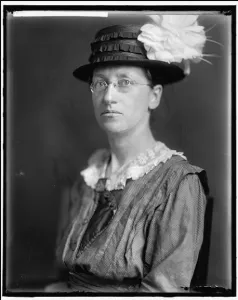Symbolic conflict, a fundamental concept in sociology, delves into the intricate dynamics of how symbols, signs, and language influence human behavior and society. Developed by prominent sociologist Georg Simmel, this theory underscores the profound role that symbols play in shaping our social interactions, identities, and even conflicts. In this blog post, we will explore the concept of symbolic conflict, its significance within the field of sociology, and provide a real-world example to illustrate how symbols can ignite and perpetuate conflicts in society. Join us on a journey to understand the captivating world of symbolic conflict.
Symbolic Conflict: A Fundamental Sociological Concept
The Core Idea
Symbolic conflict, rooted in the works of Georg Simmel, emphasizes the significance of symbols and signs in shaping social life. It proposes that the meanings we attribute to symbols and how they are interpreted can lead to social conflicts and tensions. Symbols are not mere markers of identity but serve as powerful tools for social differentiation and division.
Georg Simmel: The Pioneer
Georg Simmel, a German sociologist, is credited with his continued development of the theory of symbolic interactionism and symbolic conflict. His works have had a profound influence on the field of sociology and continue to be a cornerstone for understanding human interactions.
The Role of Symbols
In symbolic conflict, symbols are seen as vehicles of communication that carry cultural and social meaning. These symbols can be tangible, such as flags, clothing, or religious artifacts, or intangible, such as words, gestures, or rituals. What’s crucial is the meaning attributed to these symbols by individuals and groups.
Symbolic Conflict in Action: An Illustrative Example
To grasp the concept of symbolic conflict, let’s explore a real-world example that many of us can relate to.
Example: The Controversy Surrounding the National Anthem
Scenario: In a diverse and divided society, the national anthem is a symbol that holds deep significance. For some, it represents patriotism, unity, and a sense of belonging. For others, it symbolizes historical injustices, inequality, and the erasure of marginalized voices.
Symbolic Interpretations: People interpret the national anthem in diverse ways. Some see it as a symbol of freedom and democracy, while others view it as a symbol of oppression and systemic racism. These differing interpretations lead to clashes between those who stand during the anthem and those who take a knee in protest.
Conflict Escalation: The conflicting interpretations of the national anthem symbol lead to protests, debates, and social tensions. People who perceive the anthem as a symbol of oppression engage in symbolic actions, such as kneeling, to express their dissent. This, in turn, triggers strong reactions from those who hold a different interpretation, resulting in a symbolic conflict.
Real Consequences: The controversy surrounding the national anthem symbol results in tangible consequences. It has sparked national debates, influenced sports policies, and even led to political discussions about patriotism and the right to protest. The conflict is not just symbolic; it has real-world effects.
In this example, the concept of symbolic conflict is vividly illustrated. The differing interpretations of the national anthem symbol lead to clashes and tensions, with individuals and groups using symbols to express their beliefs, values, and dissent. The conflict is not limited to the realm of symbolism; it influences real-world actions, policies, and discussions.
Symbolic Conflict and Its Impact on Social Structures
The concept of symbolic conflict has far-reaching implications for sociology and our understanding of social dynamics:
- Identity and Belonging: Symbols are integral to our sense of identity and belonging. They can either unify or divide individuals and communities based on shared interpretations.
- Social Hierarchies: Symbols often play a role in reinforcing or challenging existing social hierarchies and power structures. Those who control or influence the interpretation of symbols can wield significant influence.
- Social Movements: Symbolic conflict is a driving force behind social movements. Symbols are used to mobilize and unite groups with a shared interpretation against perceived injustices.
Limitations and Critiques
While symbolic conflict theory offers valuable insights into the role of symbols in society, it faces some criticisms:
- Overemphasis on Symbols: Critics argue that the theory places excessive emphasis on symbols, overlooking structural factors and material conditions that shape social conflicts.
- Simplistic Approach: Some argue that symbolic conflict can provide a rather simplistic view of complex social issues, as it tends to focus on the symbolic dimension rather than the multifaceted nature of conflicts.
Conclusion
Symbolic conflict, as expounded by Georg Simmel, is a pivotal concept in sociology that emphasizes the role of symbols in shaping social interactions, identities, and conflicts. Symbols are not just arbitrary markers; they hold deep cultural and social meaning that can ignite and perpetuate conflicts in society. Through a tangible example like the national anthem controversy, we see how differing interpretations of symbols can lead to symbolic conflicts with real-world consequences.
In an ever-evolving and increasingly diverse world, the study of symbolic conflict remains essential for understanding how symbols shape our social realities and influence the dynamics of society. As we continue to navigate the complex tapestry of human interactions, this theory reminds us that symbols are not passive markers but powerful agents of change, unity, and division in our social landscape.







